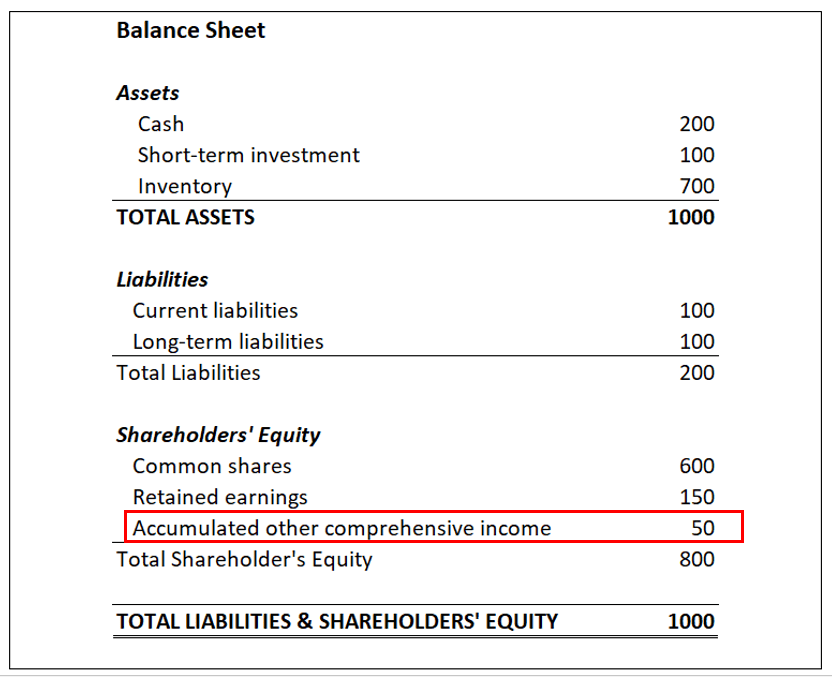Contents:


Check – This is a special form of the draft where the drawee is a bank. It is usually an unsecured debt where the company doesn’t pledge any asset but still qualifies for it based on their company’s liquidity, revenue-generating power, and achievements. Lasting Source of Funds– Maturity range can be customised according to the firm’s requirement, and matured papers can be paid by selling the new commercial paper. Draft – It is written guidance by an individual to another and to pay a stipulated sum to a third party.
- For this reason, the risk of default on commercial paper is fairly low.
- Investors in commercial paper are usually institutions rather than individuals, due to the large minimum denominations involved.
- Now the question arise is whether the CP are marketable securities or not?
- Robert Kelly is managing director of XTS Energy LLC, and has more than three decades of experience as a business executive.
Most of these papers are issued without any collateral, and hence, they are unsecured. The rating of the issue depends upon the asset quality and all other aspects relating to that organization. Rating is done in the same manner in which it is done for the bonds. These are not covered by the deposit insurance, e.g., Federal Deposit Insurance Corporation insurance in the U.S., and hence, investors obtain insurance from the market separately as a backup. According to the Commercial paper definition, this unsecured promissory note comes along with a set maturity and is issued by All India Financial Institutions and Primary Dealers . Checks are paid on demand by a bank rather than by a certain time.
Whether the Call and put option allowed on CP ?
The issuing company has to bear all flotation cost, including stamp duty, dealers, fee and credit rating agency fee. It is possible for small retail investors to purchase commercial paper, although there are several restrictions that make it more difficult. Most commercial paper is sold and resold to institutional investors, such as large financial institutions, hedge funds, and multinational corporations.
When CPs are issued, banks will have to effect a pro-rata reduction in the criteria are met. The process of disintermediation is taking place in the free economies all over the world. With the introduction of CP financial disintermediation has been gaining momentum in the Indian economy.

It is the monetary instrument issued by corporate bodies in the nature of promissory note. The commercial paper acts as the debt instrument deployed by corporations to take a loan in the money market. The financial market in India received a boost immediately commercial papers were introduced. The Indian financial market is one of the most robust markets in the world. The issues of CPs declined to Rs. 5,663 crore on March 31, 2000. No secondary market is allowed to develop on any significant scale.
More Under Finance
A Commercial Paper can be defined as a promissory note issued by corporate bodies when seeking a short-term credit to finance their day to day operations. The issue of commercial papers is highly regulated and supervised by the Reserve Bank of India . Historically, it was first issued in India in 1990 as a short-term instrument. In finance, commercial papers were thought of as a fixable alternative to bank loans. Commercial paper can be issued only by non-bank French companies and subsidiaries of foreign companies. Law contains fairly extensive disclosure requirements and requires publication of regular finance statements by issue.
Fidson Shops For N3.5bn from Series 4 Commercial Paper Issuance – Business Post Nigeria
Fidson Shops For N3.5bn from Series 4 Commercial Paper Issuance.
Posted: Tue, 14 Mar 2023 07:00:00 GMT [source]
Learn financial statement modeling, DCF, M&A, LBO, Comps and Excel shortcuts. The liquidity crisis that ensued exposed the vulnerabilities in the U.S. money market system, resulting in more strict regulations to be placed and less capital allocated to the ABCP sector. Erin Gobler is personal finance coach and a writer with over decade of experience. She specializes in writing about investing, cryptocurrency, stocks, and more.
I) The meaning of commercial paperr may avail credit enhancement facility from any bank or financial institution in the form of stand-by assistance or back-stop facility for the CP issuance. The issuer may enter into an agreement with the bank or financial institution for the same. CP shall be issued in the form of a promissory note and held in a dematerialized form through any of the depositories approved by and registered with SEBI. CPs are redeemed on maturity date through IPA who makes the redemption payment to the investors. Maturity date is the final date of payment of redemption amount and no grace period is allowed for the same.
According to the Uniform Commercial Code , commercial papers are divided into four different types. Commercial paper can also be attractive for issuers due to the low interest rate that’s usually attached to it. While that rate isn’t always as appealing to investors, it can be a higher return than that offered by some bonds . Plus, it’s an investment option that can help diversify portfolios.
Discount/Face Value
https://1investing.in/ conglomerates such as investment firms, banks, and mutual funds have historically been the chief buyers in this market, and a limited secondary market for this paper exists within the banking industry. An entity desirous of issuing CPs shall enter into an agreement with IPA. The agreement shall be in format specified by Fixed Income Money Market and Derivative Association of India . Adequate stamp duty shall be paid on the agreement as per the rate applicable in that specific state of execution. The documents shall be submitted to IPA at least a day prior to the value date of the first deal under the same series. With the introduction of liberalisation in the global market during the year 1985 to 1990, the Indian government introduced several short term debt instruments.
Commercial Paper: Definition, How it Works, Examples – Business Insider
Commercial Paper: Definition, How it Works, Examples.
Posted: Thu, 05 May 2022 07:00:00 GMT [source]
After the war, commercial paper began to be issued by a growing number of companies, and eventually, it became the premier debt instrument in the money market. The card issuers would then purchase the receivables placed on the cards by customers from these merchants . Commercial Paper has long been regarded as a haven of high liquidity and low risk. The short-term interest rate environment, credit rating, and market liquidity condition all have an impact on Indian CP market activity.
Every issue of CP, including renewal, shall be treated as a fresh issue. IPA should have Demat account – ‘CP Securities Account’ and an exclusive ‘CP Funds Account’ for each issuer. Mentioned below are some pointers that discuss the merits and demerits of commercial paper. Have a look at these pointers to understand when it is beneficial to avail this paper. Subsequently, the Uniform Commercial Code has divided the commercial paper in India into four categories, as mentioned below. Secured Commercial Papers – It is also known as Asset-Backed Commercial Papers and assured by other financial assets.
On June 21, 1970, Penn Central filed for bankruptcy under Chapter 7 of the U.S. Bankruptcy Code and defaulted on approximately $77.1 million of commercial paper. This sparked a runoff in the commercial paper market of approximately $3 billion, causing the Federal Reserve to intervene by permitting commercial banks to borrow at the discount window. This placed a substantial burden on clients of the issuing dealer for Penn Central’s commercial paper, Goldman Sachs. In case of default, the issuer of commercial paper would be debarred for 6 months and credit ratings would be dropped down from existing to «Default». After issuance of IPA certificate, issuer shall send such certificate along with Corporate Action Form to RTA and Depository for the purpose of allotment of CPs.
Nevertheless, many companies still maintain bank lines of credit as a «backup». They must therefore put aside equity capital to account for potential loan losses also on the currently unused part of lines of credit, and will usually charge a fee for the cost of this equity capital. There are certain rules and restrictions on issuances, issuers, and investors. It is usually unsecured but, at times, backed by financial assets. The discount at which the instrument is issued results in the rate of return on commercial paper.

Another potential difference between the two is the collateral requirements. For long-term bonds, investors will often want security that if something were to happen, they have the first right to claim company assets. Therefore, many bonds may be secured, while the riskiest bonds may more closely mirror commercial paper by being unsecured. Low interest rates for issuers mean low rates of return for investors. Also, due to the large minimum denomination of $100,000, commercial paper typically isn’t directly available to smaller investors. However, they can invest indirectly through companies that buy commercial paper.
Commercial paper – though a short-term obligation – is issued as part of a continuous significantly longer rolling program, which is either a number of years long , or open-ended (as in the U.S.). If the maturity is less than 270 days, the issuer does not have to file a registrations statement with the SEC, which would mean delay and increased cost. Certificates of Deposit – A CD is an instrument wherein the bank acknowledges the receipt of deposit. Further, it also carries details about maturity value, interest rate, and maturity date. Promissory NoteA promissory note is defined as a debt instrument in which the issuer of the note promises to pay a specified amount to a party on a particular date. And the surprising fact is that the commercial paper does have a validity of maturity from a minimum of 7 days.
Bright Co. successfully obtains funding through commercial papers. For lenders, the total profit on the commercial paper will be $1.5. This amount will include the $1 due to the discount received and $0.5 of interest on the paper. Commercial papers are also unsecured instruments and do not create any lien on a borrower’s assets.

Plus, get practice tests, quizzes, and personalized coaching to help you succeed. The firm’s borrowing account will be classified as a standard asset by financing companies. One variation of commercial paper is asset backed commercial paper , which is also a short-term issuance but is backed by collateral. The Balance uses only high-quality sources, including peer-reviewed studies, to support the facts within our articles.
It’s an alternative to having to go through the effort and cost involved in getting a business loan. By issuing commercial papers, the credit available from banks may get reduced. A material alteration is an addition or deletion of the language of an instrument, which changes the obligations of any party to it. A defendant may avoid liability for payment of a commercial paper if its terms have been materially altered. Examples of such alterations are a change in the date of payment or amount to be paid. A holder of a negotiable instrument who has been refused payment when payment was due has a Cause of Action against the party or parties liable for payment.
In this article, we will see the meaning of commercial paper with examples, its features, types, and procedure to issue commercial paper. Commercial paper, also called CP, is a short-term debt instrument issued by companies to raise funds generally for a time period up to one year. It is an unsecured money market instrument issued in the form of a promissory note and was introduced in India for the first time in 1990. Commercial paper is typically issued by large, financially stable companies with good credit ratings. These may include corporations, financial institutions, and other businesses. Commercial paper is an unsecured form of promissory note that pays a fixed rate of interest.
